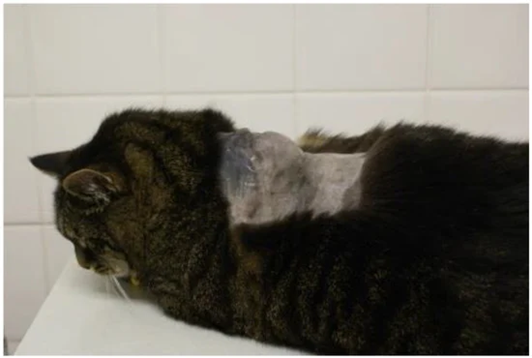Other Feline Viruses
1/23
There's no tags or description
Looks like no tags are added yet.
Name | Mastery | Learn | Test | Matching | Spaced |
|---|
No study sessions yet.
24 Terms
What is feline panleukopenia?
A rare disease that infects bone marrow and lymphoid tissue causing panleukopenia.
Feline infectious enteritis
Long term survival in the environment
What are the clinical signs of feline panleukopenia?
Villus crypt epithelium —> enteritis
Panleukopenia
late gestation/neonatal cerebellum —> cerebellar hypoplasia
early pregnancy —> foetal death & abortion
sudden death
profuse diarrhoea
pyrexia, depression, anorexia
How do you treat feline panleukopenia?
Interferon (not licensed)
Fluid theraoy
Antibacterials to control secondary infection
How is feline panleukopenia diagnosed?
Based on clinical signs & history (e.g. pregnancy)
PCR faecal samples from suspected individuals
Post mortem examinationn —> histopathology
Prevention of panleukopenia
Vaccination —> live & inactivated
Biosecurity
Elimination of virus from environment
What are some examples of feline enteric viruses?
Feline enteric coronavirus (mutates to FIPV)
Feline astrovirus
Feline rotavirus
both possible in mild enteritis in young kittens
Feline torovirus
What is cowpox?
A disease of wild rodents that infects cats via ingestion or bites from wild rodents.
Where and when is cowpox most commonly seen?
In rural hunting cats.
Mostly during summer & autumn
What types of lesions can cowpox cause in cats?
Typically starts with single primary lesion
Skin lesions that can spread into more widespread lesions that develop after 1-3 weeks
Systemic illness may develop in immunosuppressed cats
The use of what should be avoided in cowpow affected cats?
Steroids
Is cowpox zoonotic?
Yes, it can be transmitted to humans.
What is the main influenza virus that infects cats?
H5N1
(rare in cats but notifiable)
How is influenza virus mainly transmitted to cats?
Through contact with domestic/wild birds or droppings —> leads to respiratory and GI signs which can be spread to other cats and people.
Clinical signs of feline influenza virus
Raised body temperature
Decreased activity
Conjunctivitis & laboured breathing
How to prevent the spread of feline influenza virus
Stop pets having close contact with:
dead or sick wild birds
droppings, feathers, or carcases of wild birds
feed & water bowls that wild birds could have accessed
Cats should not be fed non-commercial raw poulty, mean, game bird, wildfowl or other wild bird meat
Describe feline spongiform encephalopathy
Prion protein disease
Same agent as bovine spongiform encelopathy in cattle (BSE)
Domestic cats & some zoo populations
Seemingly eradicated through changes in feeding
What are the clinical signs of feline spongiform encephalopathy?
Behavioural changes
Polyphagia (insatiable hunger)
Polydipsia
Altered grooming habits
Muscle fasciculations (involuntary, rapid contractions & relaxations of muscle fibres)
Drooling of saliva
Altered gait
What are the two types of vaccines offered to cats for feline panleukopenia?
Live and inactivated vaccines
What are the core vaccines for cats?
Feline calicivirus
Feline Herpes Virus
Feline panleukopenia virus
What are the guidelines for vaccinating cats?
Aim to vaccinate every animal with core vaccines
Only give non-core vaccines that are necessary for that animal (at higher risk?)
Vaccinate at 8-9 weeks, 2nd vaccination at 3-4 weeks, 3rd vaccination at 14-16 weeks
booster at 1 year then booster every 3 years
Describe the efficacy of vaccinations for kittens
Depenedent on MDA levels —> dependent on titre in dam & ingestion of colostrum
Repeat vaccinations to kittens to cover unknown levels of MDA
What type of vaccine should be avoided for pregnant queens?
Live vaccines
Describe multivalent products
Incorporate more than one vaccine
Ease of administration
Less able to do risk/benefit analysis for each individual animal
Duration of immunity has to be for the product with the shortest duration
What are the problems with vaccination?
Occasional lack of efficacy
occasional adverse reactions (e.g. injection site sarcomas)

post-licensing (surveillance scheme)
Don’t always prevent infection/transmission (but effective at reducing clinical disease)